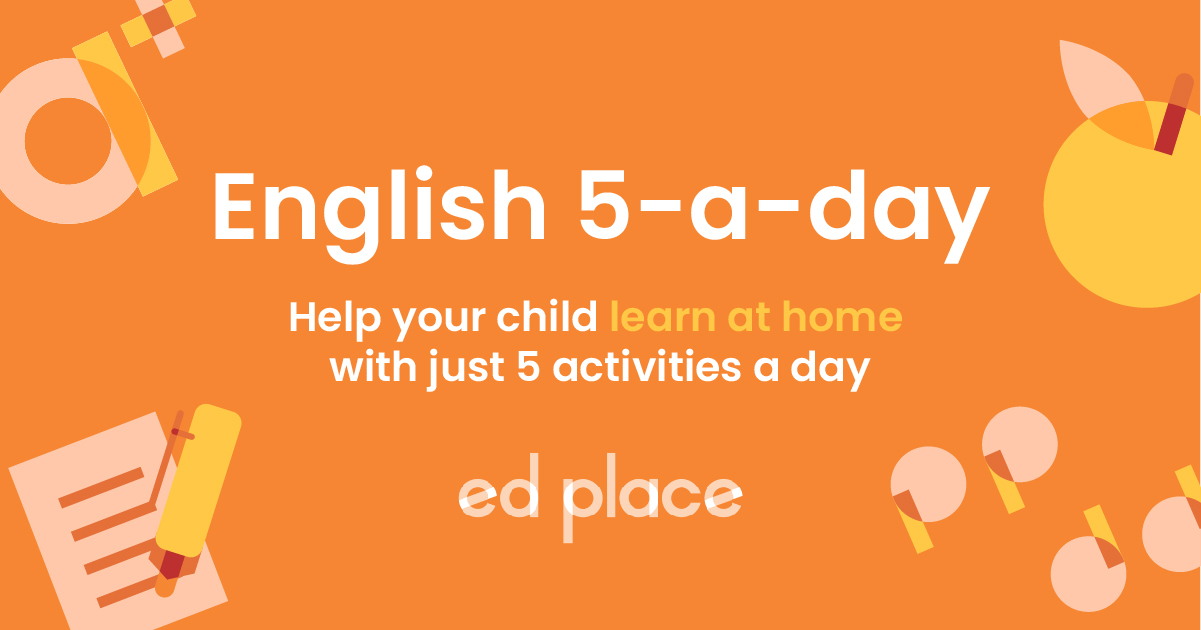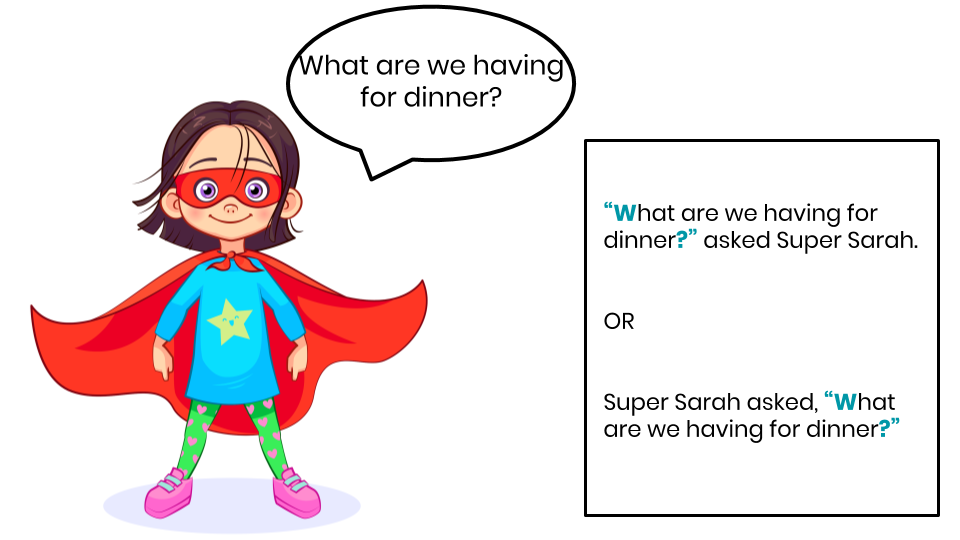
EdPlace's Y3 & Y4 Home Learning English Lesson: Punctuating Direct Speech
Looking for short lessons to keep your child engaged and learning? Our experienced team of teachers have created English, maths and science lessons for the home, so your child can learn no matter where they are. And, as all activities are self-marked, you really can encourage your child to be an independent learner.
Get them started on the lesson below and then jump into our teacher-created activities to practice what they've learnt. We've recommended five to ensure they feel secure in their knowledge - 5-a-day helps keeps the learning loss at bay (or so we think!).
Are they keen to start practising straight away? Head to the bottom of the page to find the activities.
Now...onto the lesson!
Inverted Commas or Speech Marks?
In this article, we'll break down teaching inverted commas (speech marks) and other speech punctuation into simple steps. You may want to cover each step on separate days to make sure your child is confident before moving onto the next step. This can be rather a confusing subject to teach and (as if couldn’t be made any more complicated) some books do not always punctuate speech correctly which can make it even more confusing! However, by following these simple steps, everything should become clearer to both you and your child.
We're sure that if you follow this article through, your child will be able to:
1) Understand which punctuation is required in direct speech
2) Explain why this punctuation is required
3) Apply this understanding and punctuate direct speech accurately themselves
Technical Terminology!
It's really important that children understand the terminology for direct speech.
1) Direct speech means that a person or a character is saying something aloud within a sentence.
2) Children should use the correct name inverted commas rather than speech marks. A nice first introduction to this might be reading a story and asking them to spot the inverted commas “ ". You could discuss with them what the character is saying too. For example: “When can we go to play in the park?” asked George. Try pointing to the inverted commas and ask them what this punctuation is classed as. As you keep reading, ask them to point to any other inverted commas and discuss that it shows a character speaking. Here, it tells us that George says something aloud: he asks when he can go to play in the park.
Step 1 - Inserting Inverted Commas
Hopefully, your child has been able to see good examples of how and where inverted commas are used and that they surround what is said, not who said it. (This is where some children struggle.) Why not see if they can apply this to the sentences below?
1) Start with simple sentences and ask your child to add the inverted commas. You can encourage your child to use their own name in the sentences and to make them silly to help them enjoy the task. See if they can add the inverted commas to the sentence below.
Ben said, I didn’t mean to eat that hairy frog.
That’s disgusting, yelled Mum.
Here's what they should have written if they put the inverted commas in the correct place:
Ben said, “I didn’t mean to eat that hairy frog.”
“That’s disgusting,” yelled Mum.
2) If your child is confident with this, make the sentences more complex so it's harder to spot the speech. Can they add the inverted commas to the sentence below?
Anna stomped down the stairs yelling, I don’t want to tidy my room! As she reached the bottom, she threw one of her toys. Why do I have to do it now? I’m so tired, she whimpered.
How did they get on? If they'd applied the same process they should have ended up with the following:
Anna stomped down the stairs yelling, “I don’t want to tidy my room!” As she reached the bottom, she threw one of her toys. “Why do I have to do it now? I’m so tired,” she whimpered.
Step 2 - Punctuation Inside the Inverted Commas
As you'll see in the examples above, there needs to be other punctuation inside the inverted commas. Speech needs to have a capital letter whether it's at the beginning of the sentence or not. There also needs to be punctuation before the inverted commas are closed. A good task to practise this is turning speech bubbles into direct speech. Getting children to change a comic strip into a story can be really fun too. Have a look at the example below, and why not try creating your own?

Step 3 - Punctuating the Rest of the Sentence
If the speech is at the beginning of the sentence, it's important children don’t put a capital letter when the inverted commas end (unless it's a proper noun – usually a name in this case). e.g. “I’m so excited to see my friends!” said Billy.
Children are used to putting a capital letter after an exclamation mark so this can be confusing. You can explain it by saying that it's not the end of the sentence and we don’t put capital letters in the middle of the sentence. If the speech isn't at the beginning, a comma is needed e.g. Billy said, “I’m so excited to see my friends!”
Step 4 - It's Show Time!
There’s lots to remember with the steps above, but now is the time to practice. Let your child give it a go and you should be able to see clearly if there's a particular step they're unsure of and need more help with. It’s very cliché, but with direct speech punctuation, practice really does make perfect!
Add the missing punctuation to the sentences below:
1) my best friend is very clever said Bethany.
2) Matthew asked, has anyone seen my hat
Stretch and Challenge questions – can you make these sentences into direct speech?
3) My mum told me I need to walk home from school today.
4) The teacher told the class that they were too loud.
Step 5 - How About Testing Your Understanding?
We hope your child is feeling more confident with punctuating direct speech! If so, now is the perfect time for you to put them to the test. Here are some activities which will help to consolidate their learning. We recommend doing them in this order so that the learning builds progressively.
All activities are created by teachers and automatically marked. Plus, with an EdPlace subscription, we can automatically progress your child at a level that's right for them. Sending you progress reports along the way so you can track and measure progress, together - brilliant!
Activity 1: Punctuate Direct Speech
Activity 2: Use Speech Marks Accurately 1
Activity 3: Use Speech Marks Accurately 2
Activity 4: Use Punctuation in Speech
Activity 5: Direct and Reported Speech - Know the Difference 1
Answers
1) “My best friend is very clever,” said Bethany.
2) Matthew asked, “Has anyone seen my hat?”
3) “You need to walk home from school today,” said Mum
OR
Mum said, “You need to walk home from school today.”
4) The teacher told the class, “You’re being too loud.”
OR
"You’re being too loud,” the teacher told the class.
Keep going! Looking for more activities, different subjects or year groups?
Click the button below to view the EdPlace English, maths, science and 11+ activity library








